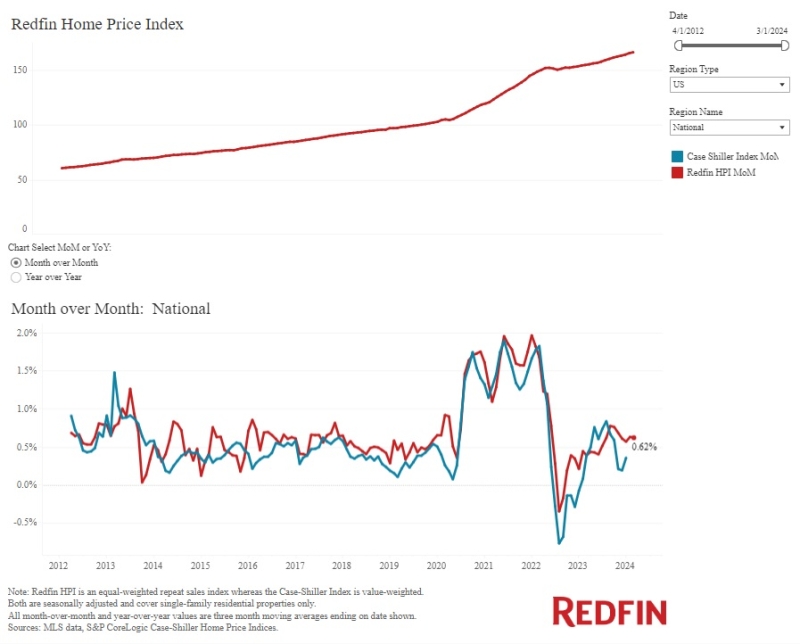Advertisement
Competing for the rate shopping customer
Originating a non-conforming loan that's sellable on the secondary marketJames L. Smithnon-conforming loans, bundling
If you've even written one non-conforming loan, chances are that
you've had your eye on the secondary market. What you might not
know is that your institutions ability to sell that loan on the
secondary market starts when you originate it.
The secondary market for mortgages traces its history back to
the mid-1930s. In 1938, the government created Fannie Mae to buy
and hold Federal Housing Administration-insured loans. Fannie Mae
was designed to purchase loans from lenders freeing up their funds
for other mortgages. But those were and continue to be for
conforming mortgages only.
Today, the secondary mortgage market is a multi-billion dollar
industry that ranges from bundling a variety of mortgages to
selling one loan at a time, both conforming and non-conforming.
These transactions are sold to large institutional investors and
through Wall Street firms. Large and small institutions have the
ability to bundle their loans and sell them on the secondary
market, provided they are properly originated.
So, how do you write non-conforming loans that will appeal to
Wall Street's appetite for investments? Here are the questions you
need to answer:
What type of loan is it?
Is it sub-prime, alt-A or a distressed asset (scratch and dent)?
The type of asset you're originating leads to different directions
in defining the risk of the asset. The amount of perceived risk
will be a function of price. Also, you need to consider the avenues
you have for selling the loan. For example, Freddie and Fannie do
not typically buy non-conforming loans.
Is it a first-lien or second-lien
property?
This is another matter where the perceived risk will affect the
price. For example, because there is a higher loss severity
associated with second lien property, you will need to compensate
for the additional risk with an increase in interest rate.
How seasoned are the assets?
Are they newly originated? Five years old? That determines just how
dependable the appraisal and other origination documents will be.
If you have an appraisal that is 30 days old, obviously you can
expect it to have a better chance to reflect the value of the
property today than an older appraisal. If you have an older
appraisal, and no one's seen the property in three years, a lot
could have changed. If you have a lending decision based on
information that old, the value could have changed a lot since the
loan was written.
What are the demographics where the loan was
originated?
What state is it in? There are specific foreclosure frequencies and
loss severities associated within certain regions of the country.
Think of Florida or Louisiana and what's happened there to property
values. Is the property in a FEMA flood zone? Is it in the inner
city? Is it a row home? Is it in one of the non-disclosure states?
There are 13 non-disclosure states where information about
properties can't be shared outside the state. They are Alaska,
Idaho, Indiana, Kansas, Louisiana, Mississippi, Missouri, Montana,
New Mexico, North Dakota, Texas, Utah and Wyoming. Selling loans in
these states presents its own set of challenges.
What are your goals for the exit strategy of the
loan?
Wall Street firms can create investment structures to tailor to
your appetite for risk. Are you willing to hold onto any kind of
risk on the asset? Do you want to sell the loan and walk away with
no recourse, or will there be some kind of recourse involved? The
answer to this decision will dictate the investment opportunities
you have. Do you want to keep it on your balance sheet? If you're
going to securitize the loan and hold it on your balance sheet,
there are several types of bond structures that can be created for
you.
What is the financial position of the originating
company?
Is your institution large or small? If the financial position of
the originating company is strong, it can influence the terms of
the due diligence process. But don't think that because you are a
small institution that this is not a game for you. There are
specific investment opportunities for different sizes of companies.
If you're a small savings and loan and want to sell to Wall Street,
there are ways. Some Wall Street operations actually have appetites
for smaller mortgage companies rather than larger ones. Don't
assume that if you're a small institution, you don't have access to
all aspects of the secondary market. In fact, there are many Wall
Street firms that have operations specifically to deal with small
institutions.
What kind of volume are you originating each
month?
If you can bulk up many loans at a time, you'll get better pricing
than if you try to sell off one or two loans at a time.
What are the financial objectives of selling the
asset?
Do you want cash today or a cash flow over a period of time? Do you
want to have an equity piece in the transaction? Do you want the
asset to remain as part of your balance sheet? All of these factors
affect the pricing you'll get.
What is the strength of your representations and
warrants?
Representations and warrants represent your institution's ability
to make restitution to the purchasing firm should there be certain
problems with the loan. What is your institution's ability to
purchase assets back or put in non-performance penalties? If you
sell a loan and the first payment defaults or some sort of fraud is
discovered, what can your institution do to remedy the situation?
If your institution were willing to take back that loan, the
pricing would be affected. If you were so small that you couldnt
buy the loan back, the pricing would be lower to cover the
risk.
What are your lending practice goals in the future in
the non-confirming market?
How do they relate to your institution's long-term financial
objectives? Where do you want your relationship with the secondary
market to go? Are you interested in selling large transactions in
bulk or do you just want to get rid of a few loans? Do you want to
involve yourself with the non-conforming lender for the long term?
If so, it makes sense to start developing relationships with Wall
Street. There are more things you can do if want to be involved
long term rather than short term. Wall Street firms will bend over
backwards if you want a long-term relationship.
Serious entry into the secondary market for non-conforming loans
requires a commitment on the part of a financial institution. Most
prefer to bring in outside help that is familiar with the landscape
and understands that one size doesn't fit all. Outside vendors like
ours take on the responsibility of tailoring an institution's due
diligence processes so that they can create the most saleable asset
in the secondary market possible.
The key to choosing such a provider is to examine their lending
experience with marketing loans on the secondary market. Look for
length of time on the secondary market, depth of experience as both
lenders and working professionals and an understanding of what Wall
Street wants. In the end, you'll get a due diligence process on the
assets originated that is specifically related to the exit strategy
you want. Remember, one size doesn't fit all, but almost all
lenders can develop their own expertise in originating saleable
loans. The bottom line is that Wall Street's appetite for these
kinds of loans continues to be insatiable. It's time your
institution learned how to feed that beast and reap the rewards.
James L. Smith is the executive vice president of Fiserv Lending
Solutions-Portfolio Services, a risk management firm and
subsidiary of Fiserv Inc. based
in Boulder, Colo. He may be reached at (720) 565-9474.
About the author





